Karhu Ikoni Trail 1.0
Test Location: Marin, CA
Test Duration: 90 miles
Stated Stack Height (Men’s): 28 mm (heel) / 23 mm (forefoot)
Stated Heel-to-Toe Drop: 5 mm
Stated Features:
- “Asymmetrical Forefoot Lace” for adjustment on the fly
- “Ascending Fulcrum” geometry to enhance forward propulsion
Integrated protective toe bumper - “M” and “T” shaped lugs for superior grip
- Midsole made from “AeroFoam Trail” material
- An “M-lock” lacing system for midfoot security
Stated Weight per Shoe (US Men’s Size 9): 349 g / 12.3 oz
Blister Measured Weight per Shoe (US Men’s Size 9):
- Shoes + Laces: 313 g (left) & 311 g (right)
- Insoles: 26 g (left) & 26 g (right)
- Total: 339 g (left) & 337 g (right)

Size Tested: US Men’s 9 / EU 42.5
MSRP: $155
Reviewer: 5’9”, 150 lbs / 175 cm, 68 kg
Intro
Karhu, the Finnish sports equipment company founded in Helsinki in 1916, has over a century’s worth of experience designing and producing performance footwear for distance running. Though not a super common name in the US, Karhu’s history is full of highlights that have left significant impressions on the running industry, some of which include selling their three stripes trademark to Adidas in the 1950s and developing the first patented “Air Cushion” midsole in the 1970s. Today, their fleet of shoes consists mainly of road options, with models intended for just about every distance.
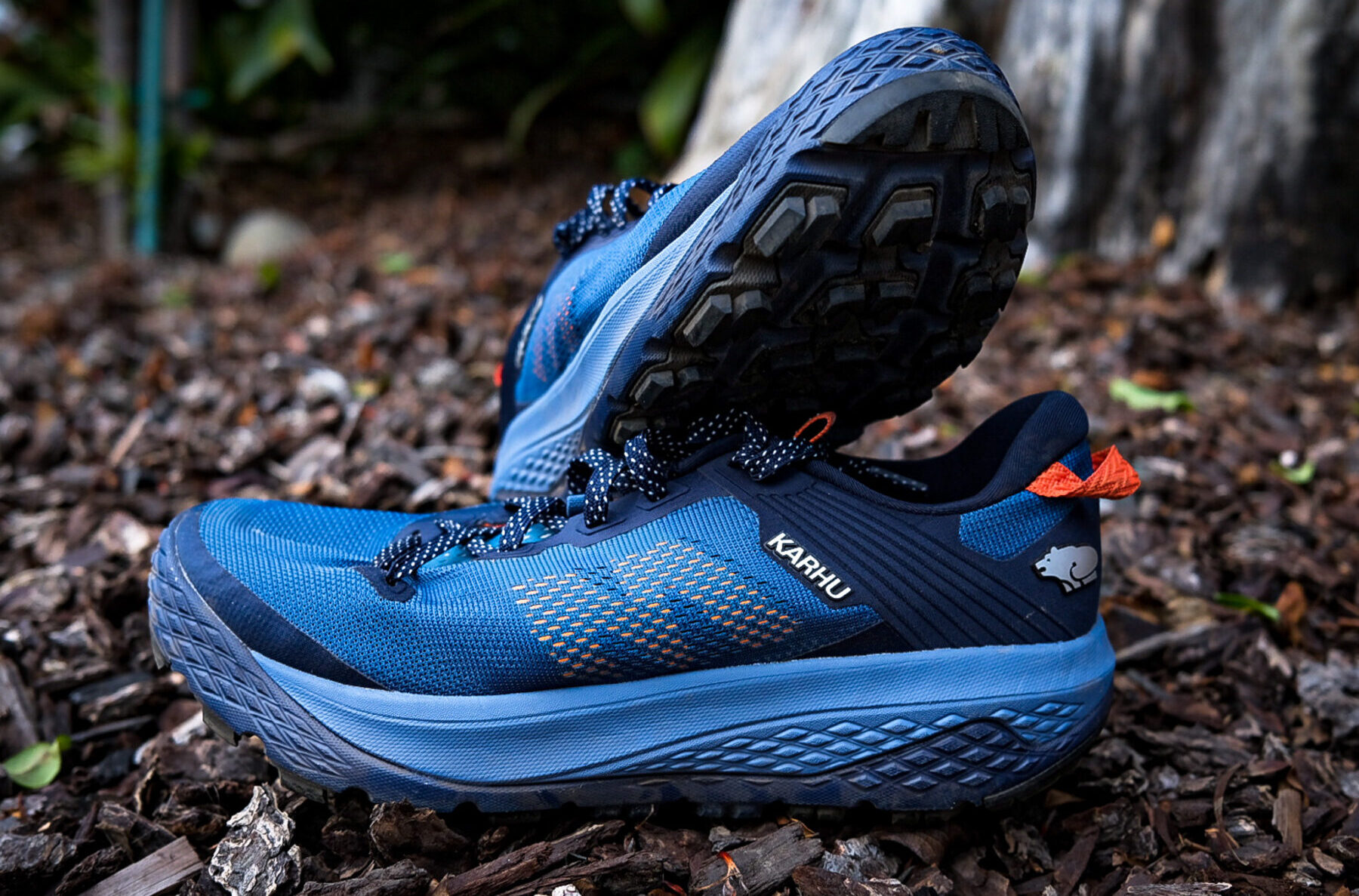
The Ikoni Trail 1.0 represents Karhu’s first odyssey into the trail space. Taking influences from the Ikoni 2.0, a versatile, high-cushioned road shoe, the Ikoni Trail features many of the same physical attributes, in addition to those commonly seen on dedicated trail models. Like the rest of Karhu’s lineup, the Ikoni Trail uses the brand’s proprietary “Fulcrum Technology” as its foundation, a system that essentially acts as a rocker to increase forward propulsion during the gait cycle. Where the shoe diverges from its road running inspiration comes in the form of myriad tweaks Karhu makes to adapt the Ikoni Trail for travel on unstable, variable terrain. On paper, these adjustments add up to what looks to be a highly capable option for medium to long-distance trail running and racing.
I’ll be putting in lots of miles in the Ikoni Trail 1.0 in the coming months, but for now, let’s take a closer look at its design.
Fit & Features
The “rocker” effect of Karhu’s “Ascending Fulcrum” dominates how one would characterize the Ikoni Trail’s fit and feel; it cradles and propels the foot forward on climbs, descents, and on the flats. That said, the shoe has an extensive supporting cast of properties that add sought-after qualities in their own way. For one, the Ikoni Trail has a high forefoot volume to allow toe splay and an asymmetrical lacing system to help lock down the forefoot when needed. It also comes equipped with a robust integrated toe bumper / rand for protection, and what Karhu calls their “M-lock” design, which manifests as supportive stays on either side of the shoe’s medial / lateral sidewalls to assist with midfoot lockdown. The Ikoni Trail’s lacing system creates a seven-point heel lock for hind foot security, as well.

With a stack height of 28 mm / 23 mm, the shoe is technically just out of reach of the “maximal” category, though its still sizable midsole — made from relatively firm “AeroFoam Trail” material in a two-piece construction — might be enough to justify its inclusion for some. The Ikoni Trail’s 5 mm heel-to-toe drop, on the other hand, lands squarely in the “neutral” territory for most trail shoes. Weight-wise, we’re looking at a chunky 349 g / 12.3 oz for a US Men’s Size 9, well and above what the rest of the shoe’s measurements would otherwise indicate. For reference, here’s how the Ikoni Trails’s stated weight compares to the stated weights for some other similar models. All weights are based on a US Men’s Size 9.
255 g / 9.0 oz — Saucony Endorphin Edge
260 g / 9.2 oz — Salomon Ultra Glide
283 g / 10.0 oz — Topo Athletic Ultraventure 2
295 g / 10.4 oz — Hoka Mafate Speed 4
306 g / 10.8 oz — Scarpa Spin Infinity
306 g / 10.8 oz — ON Running Cloudultra
303 g / 10.9 oz – Altra Timp 4
310 g / 10.9 oz — La Sportiva Akasha II
310 g / 10.9 oz — The North Face VECTIV Infinite
349 g / 12.3 oz — Karhu Ikoni Trail 1.0
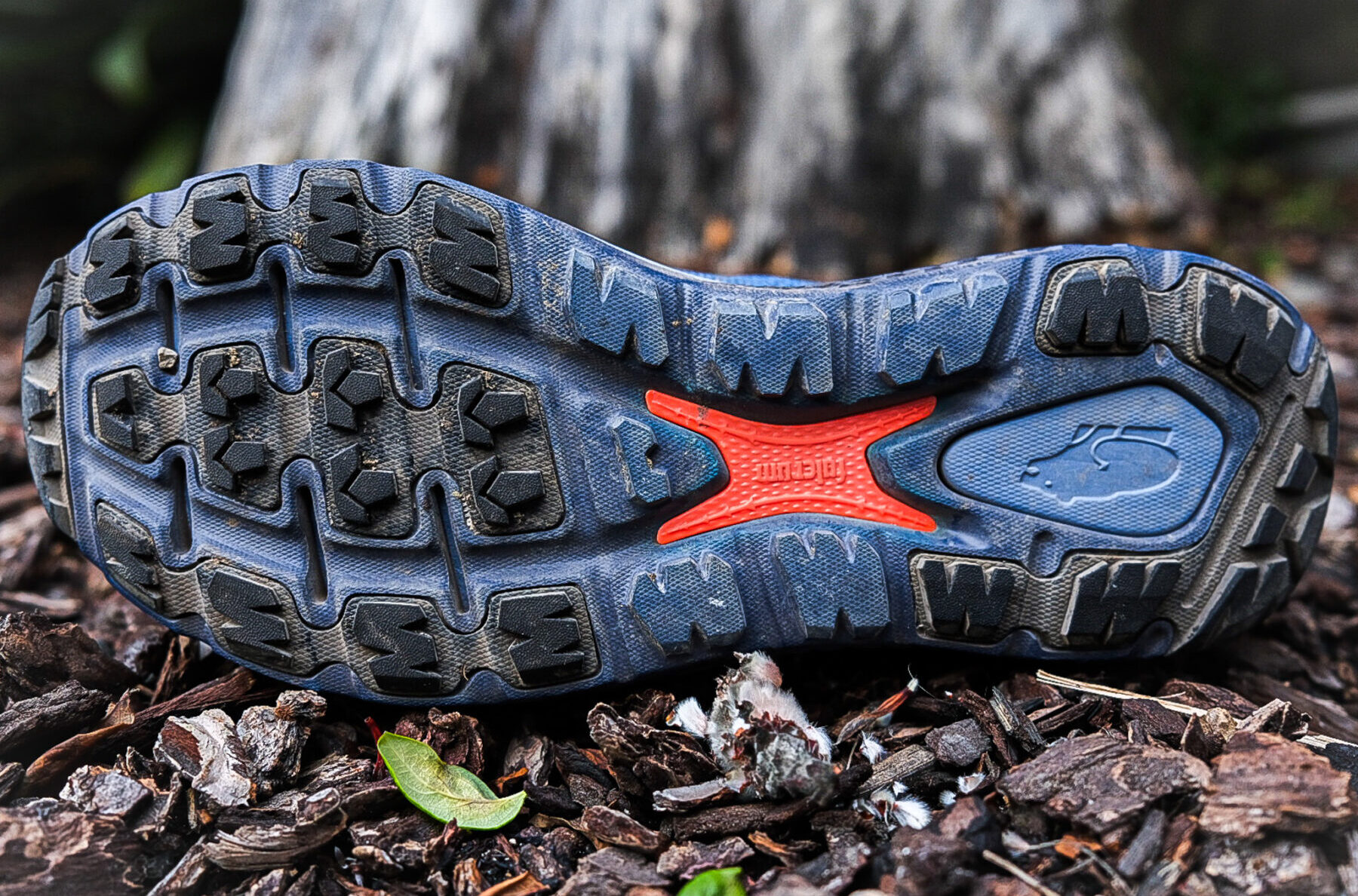
Some Questions / Things We’re Curious About
- Given the fact that the Ikoni Trail’s 28 mm / 23 mm stack height looks and feels closer to a midsole measuring more than 30 mm, what’s the shoe’s ideal distance?
- How will the shoe’s firm AeroFoam Trail foam midsole affect its ground feel?
- Can the shoe’s performance / durability justify its hefty weight?
- What kind of trail runner is this shoe for, aside from folks who prefer a wider toe box and a fairly neutral drop?
Bottom Line (For Now)
The Karhu Ikoni Trail comes from a heritage brand with over a century of experience crafting performance footwear for long-distance running. As a trail-oriented take on an already established model, its numerous features seem smartly positioned to meet the demands of varied off-road terrain. However, whether or not all of these design considerations do enough to justify the Ikoni Trail’s weight remains to be seen — stay tuned for our full review.
FULL REVIEW
Intro
After putting close to 100 miles on the Karhu Ikoni Trail 1.0 over the last few weeks, I think Karhu has done quite the job of outfitting one of their feature road models for use on just about every type of off-road surface. In this full review, I’ll dive into why the additions they made to the Ikoni 2.0 work so well on trail, posit who I think could benefit from the Ikoni Trail 1.0 the most, and draw attention to the one area where I think the shoe could definitely improve.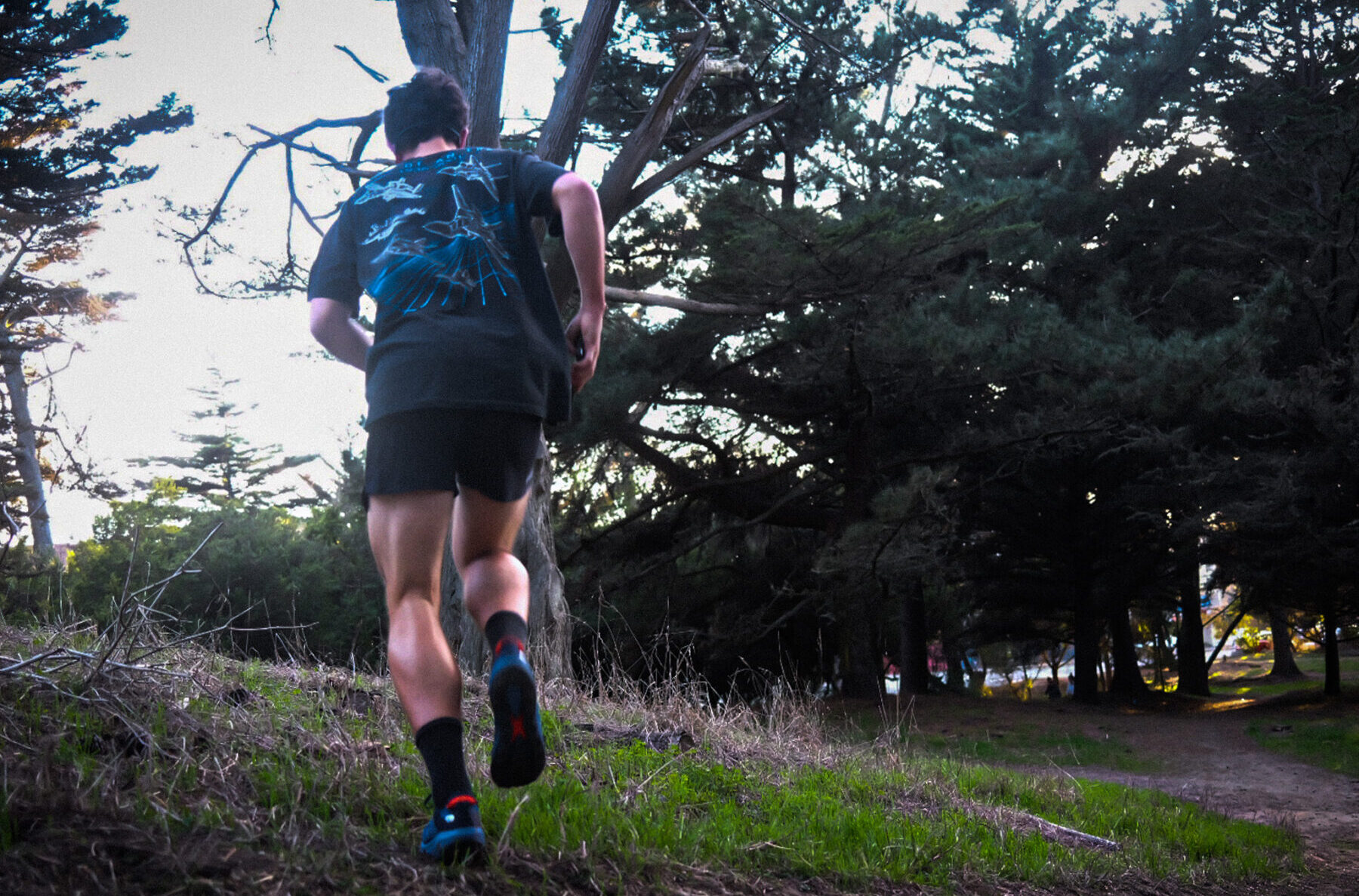
Fit
Before hopping into the assessment of whether or not the Ikoni Trail’s disparate parts combine to produce a comfortable fit worthy of logging a ton of miles in, it’s worth providing a bit of context about my own foot shape and preferences. Generally speaking, I favor models with broader lasts, soft midsoles that allow for sensitive ground feel, and low to neutral heel-to-toe drops; shoes that check these boxes tend to work well for my slightly wide, high-volume feet. On paper, the Ikoni Trail checked a lot of those boxes.
The “rocker” effect of Karhu’s “Ascending Fulcrum” dominates how one would characterize the Ikoni Trail’s fit and feel; it cradles and propels the foot forward on climbs, descents, and on the flats. That said, the shoe has an extensive supporting cast of properties that add sought-after qualities in their own way. For one, the Ikoni Trail has a high forefoot volume to allow toe splay and an asymmetrical lacing system to help lock down the forefoot when needed. It also comes equipped with a robust integrated toe bumper / rand for protection, and what Karhu calls their “M-lock” design, which manifests as supportive stays on either side of the shoe’s medial / lateral sidewalls to assist with midfoot lockdown. The Ikoni Trail’s lacing system creates a seven-point heel lock for hind foot security, as well.
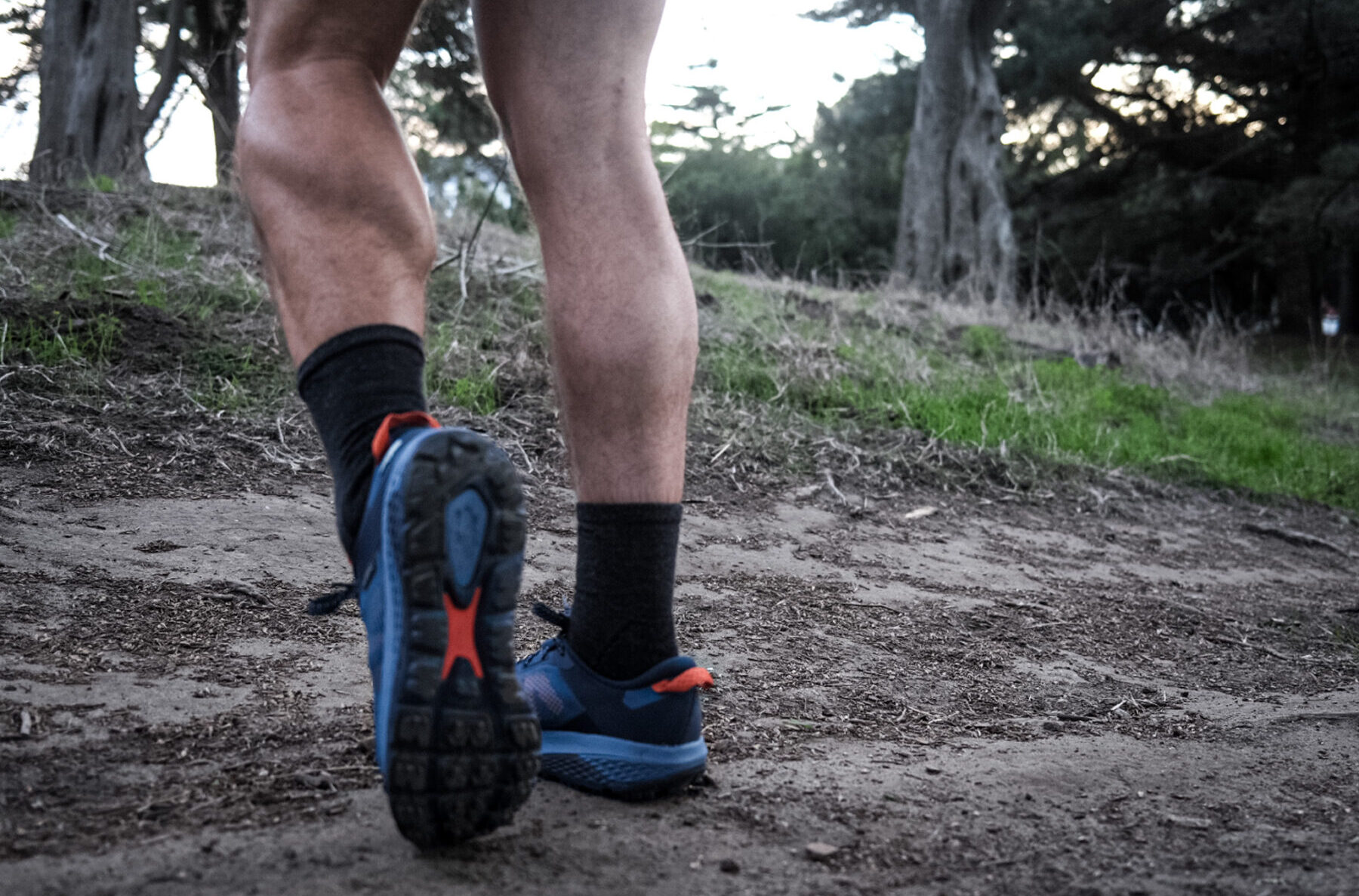
The measures Karhu takes to improve foot lockdown are both needed and appreciated. Aside from its rounded toe box, The Ikoni Trail is a relatively low-volume shoe; its shallow heel cup / collar falls an inch or two short of what’s typically seen in trail shoes (see the Hoka Speedgoat 5’s high-rising swallowtail heel collar, for example). To compensate for the potential instability brought on by the combination between a wider forefoot, a modest heel counter, and a slightly rockered geometry, Karhu doubles down on security elsewhere on the Ikoni Trail. The aforementioned asymmetrical lacing system they install, in conjunction with the shoe’s fully gusseted stretch tongue and M-lock overlays, create a firm hold over the shoe’s already slender midfoot that I found to offer more than enough support and fixedness to keep my foot comfortably in place while running. Despite the shoe’s slight heel collar, I managed to avoid the heel slippage I initially assumed was inevitable, just as long as I made sure my laces were tied tight. Speaking of which, the belay lace that extends laterally over the 5th metatarsal also assisted in the toe-off phase of my gait cycle by drawing my foot forward. Though subtle, I felt like this added feature did benefit the shoe’s overall snappiness; at what cost to the upper’s durability remains to be seen.
While I wouldn’t put the Ikoni Trail in the same class of foot-shaped shoes as those made by Altra and Topo Athletic, its last is closer in feel to that variety than, say, most models from brands like Nike and Salomon, who on the whole tend to favor slimmer, ‘European’ fits. The shoe’s belay lace does allow for the volume of the shoe’s toe box to be cinched down quite a bit, which will likely benefit runners with tapered feet, but only to a certain extent before it throws off the fit elsewhere on the shoe. So with that in mind, the Ikoni Trail’s attempt to fuse a high-volume toe box with an otherwise low-volume design might not favor particularly narrow feet with high arches.
Weight
With a stack height of 28 mm / 23 mm, the Ikoni Trail is technically just out of reach of the “maximal” category, though its still sizable midsole — made from relatively firm “AeroFoam Trail” material in a two-piece construction — might be enough to justify its inclusion for some. The Ikoni Trail’s 5 mm heel-to-toe drop, on the other hand, lands squarely in the “neutral” territory for most trail shoes. Weight-wise, we’re looking at a chunky 349 g / 12.3 oz for a US Men’s Size 9, well and above what the rest of the shoe’s measurements would otherwise indicate. For reference, here’s how the Ikoni Trails’s stated weight compares to the stated weights for some other similar models. All weights are based on a US Men’s Size 9.
255 g / 9.0 oz — Saucony Endorphin Edge
260 g / 9.2 oz — Salomon Ultra Glide
283 g / 10.0 oz — Topo Athletic Ultraventure 2
295 g / 10.4 oz — Hoka Mafate Speed 4
306 g / 10.8 oz — Scarpa Spin Infinity
306 g / 10.8 oz — ON Running Cloudultra
303 g / 10.9 oz – Altra Timp 4
310 g / 10.9 oz — La Sportiva Akasha II
310 g / 10.9 oz — The North Face VECTIV Infinite
349 g / 12.3 oz — Karhu Ikoni Trail 1.0
350 g / 12.3 oz — Altra Olympus 5
Discerning where the Ikoni Trail gets most of its heft from is pretty obvious: in its midsole and outsole. Unlike the pillowy EVA foam a brand such as Hoka uses, Karhu’s formulation feels much denser, which should translate to better durability. The Ikoni Trail’s outsole doesn’t occupy itself with subtlety either; its aggressive tread consists of “M” and “T” shaped lugs that run from heel to toe and look to be no less than 4 mm deep. In designing the Ikoni Trail, Karhu, it seems, took the straightforward approach of building out their existing road model, the Ikoni 2.0. While that’s an obvious step in outfitting a shoe for on-trail performance, I don’t think Karhu did enough to counterbalance the added bulk doing so requires.
The Ikoni Trail weighs in at just a gram shy of the Altra Olympus 5, one of the burliest models on the market designed primarily for ultra-distance runs requiring ample cushioning, a category the rest of the Ikoni Trail’s measurables resist. As a consequence, the shoe in some ways strands itself: too heavy to be ideal for uptempo efforts, yet potentially not cushioned enough for super long pushes. In future iterations, I’d love to see a trimmed-down version of the Ikoni Trail closer to the 300 g mark.
Upper
One place Karhu did attempt to save weight is the Ikoni Trail’s upper, which is made from a single layer of finely stitched mesh that’s one of the thinnest I’ve seen on any shoe, let alone one designed for use on trail. While disconcerting at first glance, Karhu again does enough elsewhere on the shoe to offset a lot of the potential weaknesses presented by such a delicate feeling upper. The Ikoni Trail is marked by a prominent toe bumper that meets the top of toe box, forming a protective rubber band that encircles the entire forefoot. Made from the same material as the shoe’s outsole, the exaggerated toe bumper keeps the Ikoni Trail’s mesh upper further off the ground and, in theory, away from debris. This feature allows Karhu the luxury of using the breathable, lightweight fabric they do without having to worry too much about its resilience against external factors like branches and rocks. It’s a smart strategy, in my opinion, one that creates a comfortable, well-ventilated fit while at the same time keeping the foot out of harm’s way.
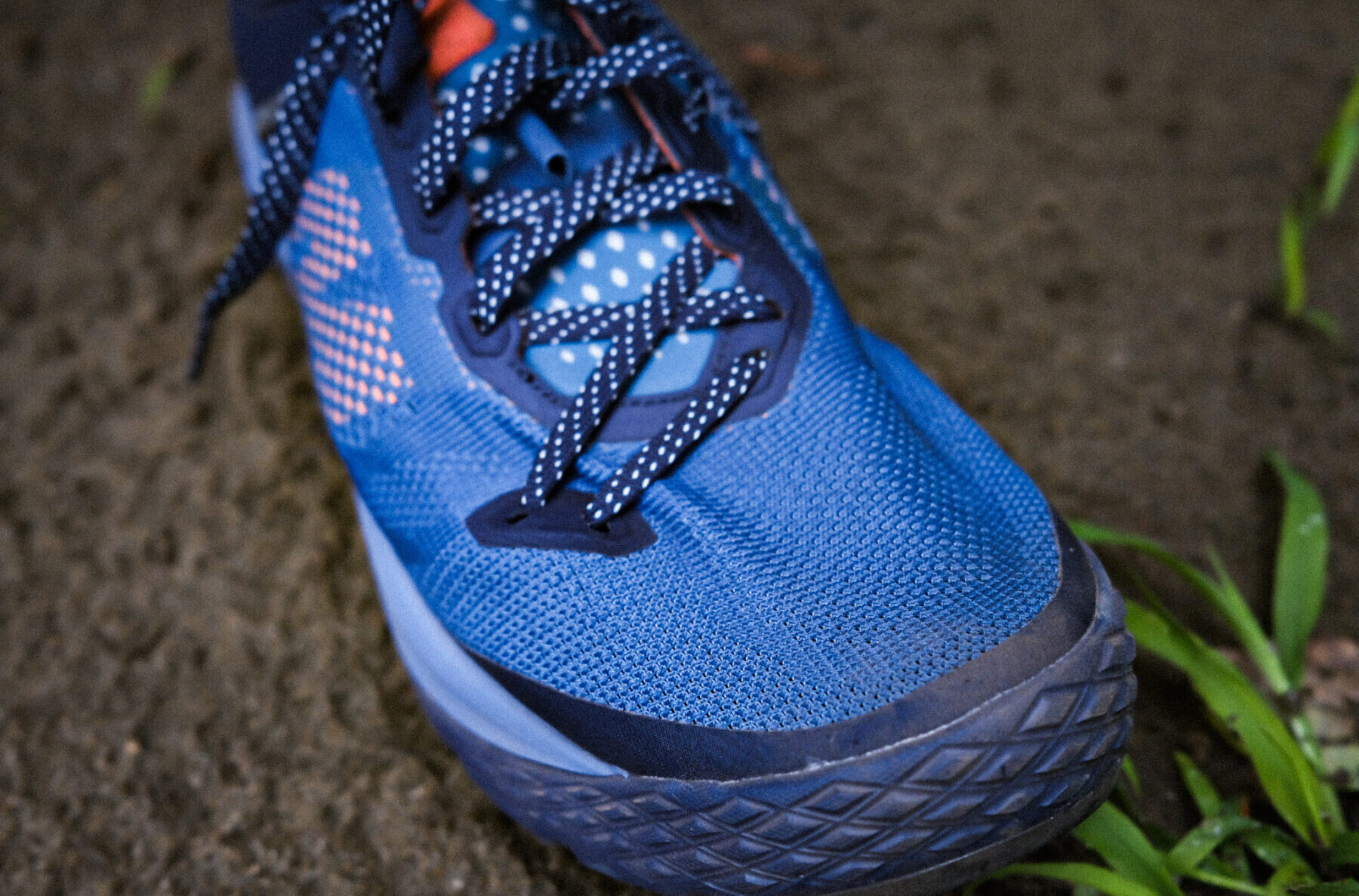
Midsole
On looks alone, it’s clear that the Ikoni Trail’s midsole is its main focus; the shoe’s silhouette is dominated by its thickness, so much so that it dwarfs its upper. Two different compositions of AeroFoam Trail material combine to make up a dual-density unit, with a firm layer of rigid foam topped by a slightly softer, livelier layer directly underfoot. Karhu then gives the Ikoni Trail’s midsole a slightly rockered geometry, a style similar to how Hoka shapes many of their models’ midsoles, and for a similar effect. The shoe’s relative rigidity and Ascending Fulcrum geometry assist with forward propulsion on flat terrain. The Ikoni Trail transitioned well from heel to toe on even ground, an inertia that helped make up for the shoe’s otherwise clunky feel. However, on more technical trails, unstable footing and a choppier stride interrupted the midsole’s ability to transfer energy efficiently, leaving me to confront the shoe’s main limitation: its weight.
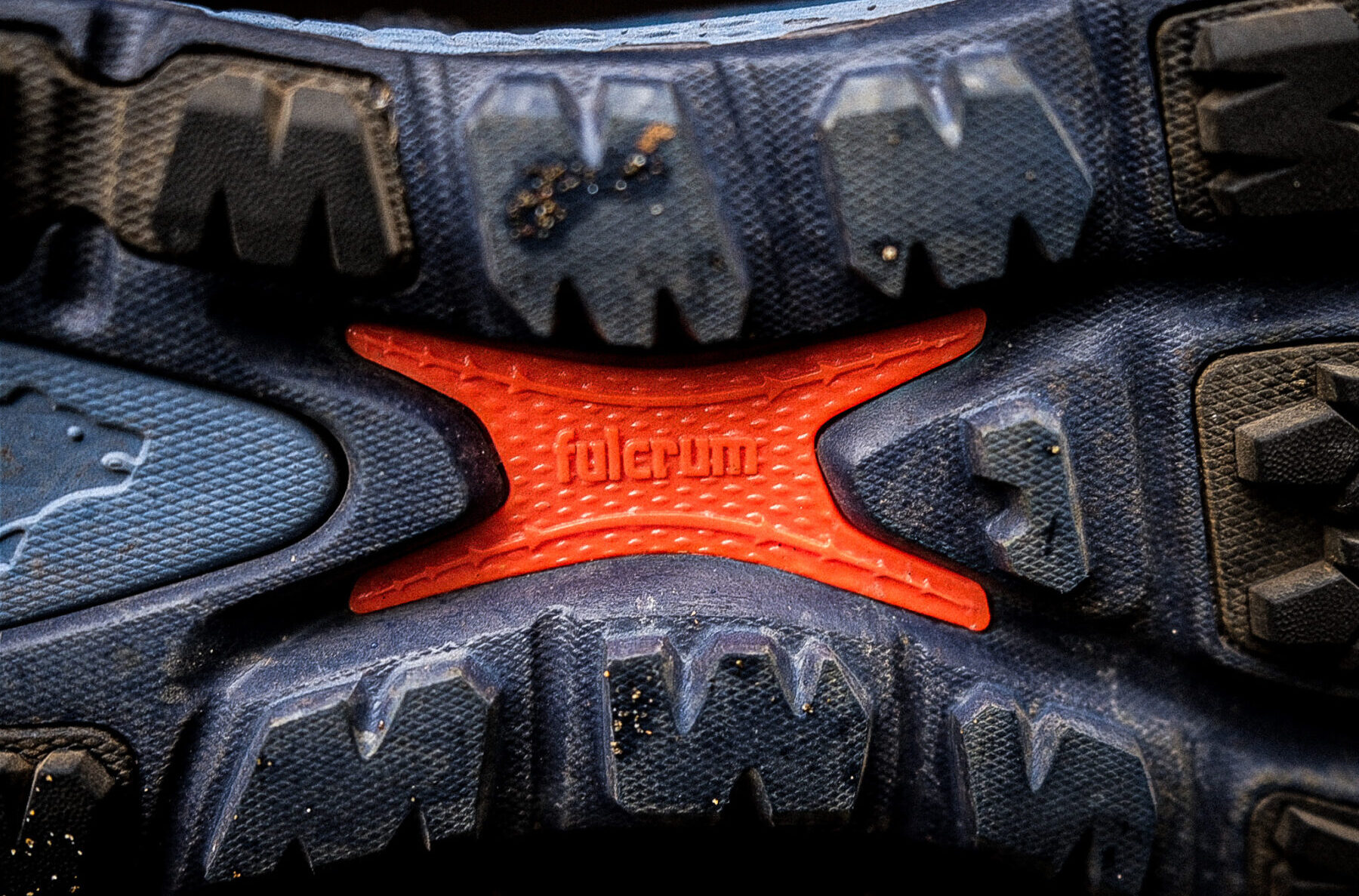
Trail running can be filled with instances that require a higher cadence for brief periods of time, say, when navigating up and/or down a climb on a loose trail. Taking shorter, more frequent steps increases ground contact time, in turn improving balance in many cases. It was in these types of situations that the Ikoni Trail’s midsole design struggled the most. The shoe felt anything but quick off the ground, and because of how dense and, at times, unforgiving Karhu’s AeroFoam Trail material felt, I had trouble getting a sense for what was underfoot, which hurt the shoe’s overall stability. A silver lining, I suppose, is that the midsole’s sturdiness proved protective against sharp rocks / roots, even in the absence of a rock plate, and I imagine it’ll be quite some time until it takes on that “packed out” feeling many lighter-weight EVA midsoles succumb to. Still, I think a more forgiving, slightly less dense foam composition could benefit this shoe a ton; not only would it help the Ikoni Trail’s weight problem, but it would also improve ground feel and make the shoe’s ride just a bit softer.
A note on breaking in the Ikoni Trail: After close to 100 miles in the shoe, I’m just now getting the sense that the midsole has started to settle into itself, so I’d urge folks having a hard time with the Ikoni Trail’s initial inflexibility / harshness to exercise a bit of patience.
Outsole
Karhu went out of their way to ensure that even a lay person wouldn’t mistake the Ikoni Trail for one of their road models. It’s not a gentle looking shoe by any stretch of the imagination, and while I appreciate a lot of the moves they made to dress it up for off-road use, I think some of their choices are a bit excessive, the outsole design being one of them.
The majority of generalist trail shoes — a category I’d lob the Ikoni Trail into — embrace 4 mm lugs (or shorter) as an industry standard. Treads with lugs of this length help the shoe’s ability to smoothly maneuver between different types of terrain. 4 mm lugs generally offer enough grip for most trail conditions but aren’t too protrusive to snag and scuff on harder surfaces. The Ikoni Trail comes furnished with 5 mm lugs, just a millimeter’s difference that ended up significantly affecting the shoe’s overall performance.

On Trail
It didn’t take me long to identify a role for the Ikoni Trail within my growing shoe quiver. The mosaic of trails just north of San Francisco can be broken into two distinct regions. The southern zone, the Marin Headlands, is known for its fast-rolling fire roads and hard-packed soil, whereas further north, the terrain around Mt. Tamalpais takes on a much more rugged makeup, with many extended sections of rock-strewn singletrack and root-laden trails. The Ikoni Trail’s protective qualities and superb traction suited runs in more technical environments, where, because of the overall slower pace required to pick through rock gardens or root systems, the shoe’s heaviness wasn’t as noticeable as it was on more runnable stuff. In these types of settings, the shoe felt pretty stable, and its stout midsole / outsole construction allowed me to be less precise with my foot placement without fear of injury. However, this style of running definitely hurt the success of Karhu’s Ascending Fulcrum geometry, which I think is much more effective on flatter, groomed surfaces that support a more consistent footstrike, and the shoe’s overall inflexibility took a while to get used to. I also did feel a bit limited in what I could do out on the trails, a drawback I chalk up almost entirely to the Ikoni Trail’s weight.
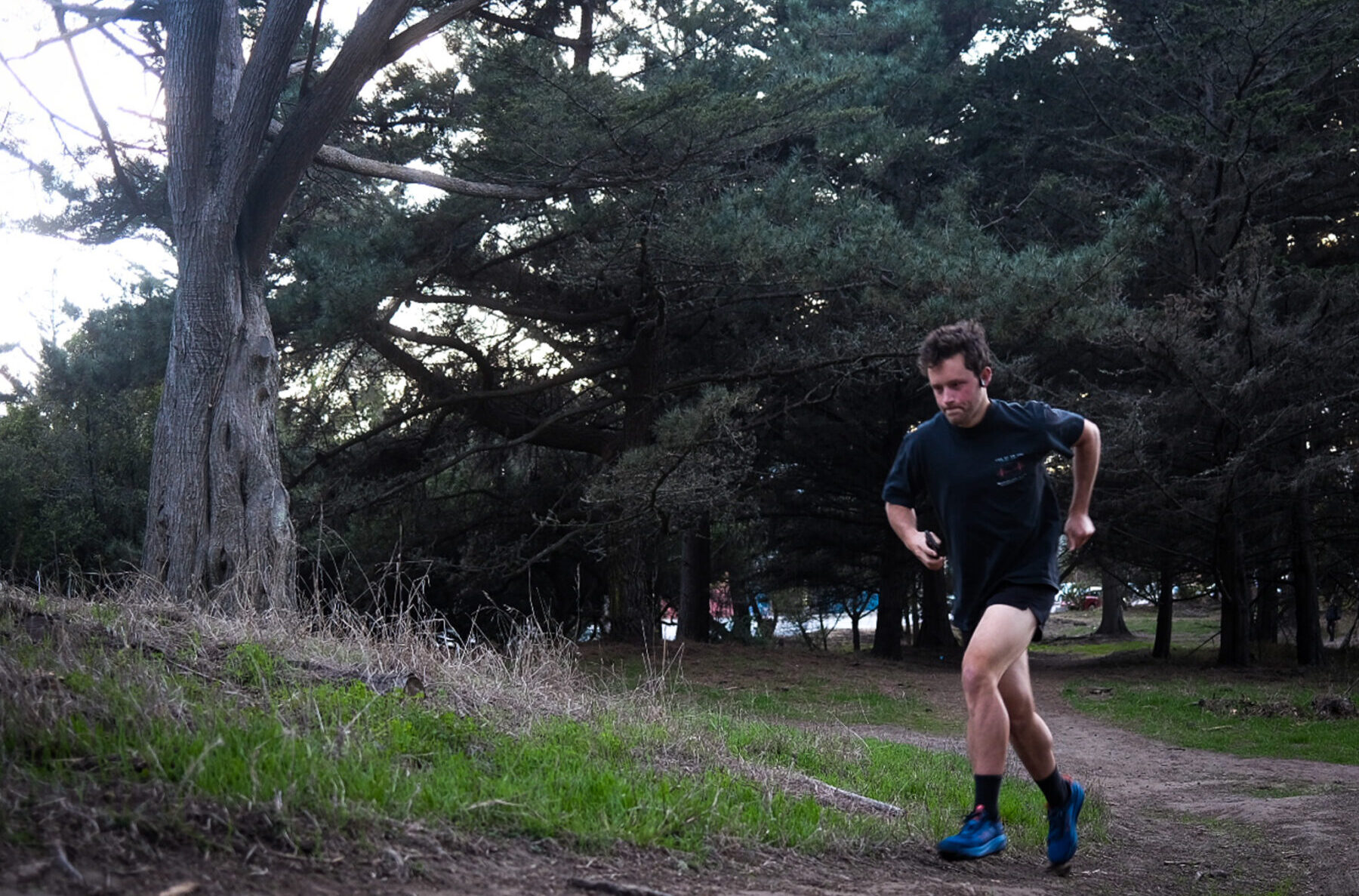
Durability
For all of the negging I’ve directed at the Ikoni Trail over its weight, its build quality deserves some rightful praise. The shoe’s midsole / outsole pairing, robust as they both are, show no signs of wear nearly 100 miles into their lifespan. Once broken in, a process I’m now just starting to feel like I’m nearing the end of, the Ikoni Trail delivers a consistent ride that has yet to degrade into anything I’d consider soupy or squishy. This shoe gives the sense of being pretty bombproof, and while I don’t like putting a number on the miles most runners can come to expect out of any pair of shoes, I wouldn’t be surprised if the Ikoni Trail stays in my rotation for the next 600 miles. As always, I’ll chime back in with updates if anything changes.
Who’s It For?
The Ikoni Trail is Karhu’s first attempt at a dedicated trail shoe, and as their debut model, it’s designed to be an incredibly accessible option. Its geometry (28 mm / 23 mm stack height, rockered profile, and 5 mm drop) and fit (high-volume toe box, low-volume midfoot, and asymmetrical lacing system) open the shoe up to a diverse range of runners, with something for just about every foot shape. Unfortunately, I’m not sure this versatility necessarily translates to the shoe’s performance on trails. Held back by its weight on shorter, faster efforts just as much as it is on longer, slower outings, the Ikoni Trail will likely find the most use for folks who gravitate toward medium-distance runs at a casual pace. The shoe’s aggressively lugged outsole also works to pigeonhole the types of terrain it performs best on, which I found to be rugged, off-camber surfaces as opposed to more uniform fire roads and bike paths. So, if you’re enticed by the idea of adding a burly, protective trail shoe to your quiver for mountain adventures where you can’t take any risks when it comes to the safety of your feet, I think the Ikoni Trail is worth a look, especially if you find yourself frequently slowed to a hike.
Bottom Line
The Karhu Ikoni Trail comes from a heritage brand with over a century of experience crafting performance footwear for long-distance running. As a trail-oriented take on an already established model, its numerous features are smartly positioned to meet the demands of varied off-road terrain. However, outfitting a road shoe for use on trail is inherently additive, and at nearly 350 g, some runners might not feel like the shoe’s dense midsole and aggressive outsole do enough to justify its weight. That said, if most of your runs take place on technical terrain, you’re fine sacrificing a bit of nimbleness for protection from sharp objects, and your mileage mostly hovers between 8-15 miles, consider giving the Karhu Ikoni Trail a shot.

It would be useful if you mentioned the place of manufacture of apparel you review (mostly to see which ones are not made in China).
I realise that companies can sometimes produce the same product in different factories around the world depending on the locale they are sold in or the year of manufacture but even a sample size of 1 can be helpful.
You can get this information directly from the manufacturer just so you know.
Hey Borislav,
Thanks for your comment. I’ll definitely try and include that information in my reviews moving forward, when it makes sense. As you suggested, it can be hard to pin down exactly where the supply chain for shoes runs through, but if it’s listed, I’ll provide it.
Thanks,
Matt